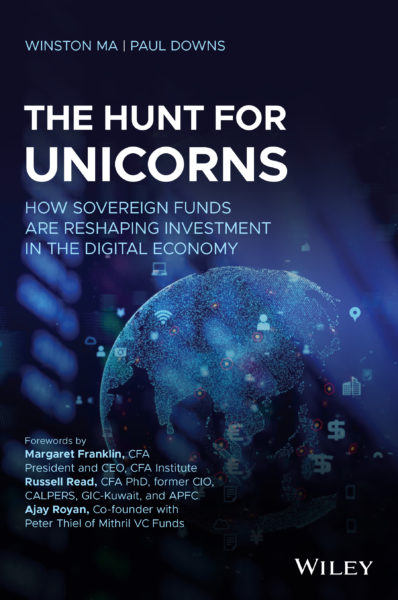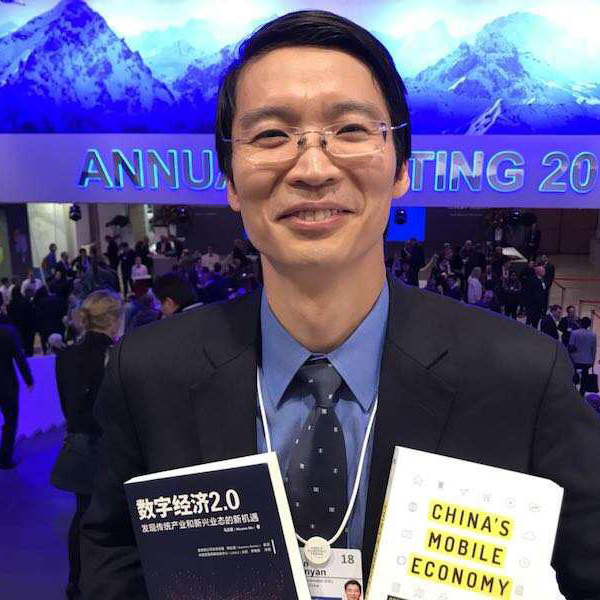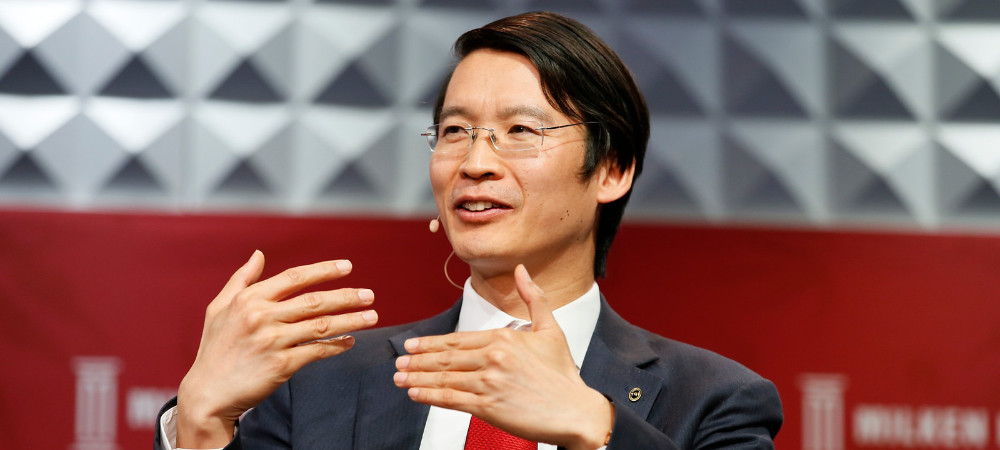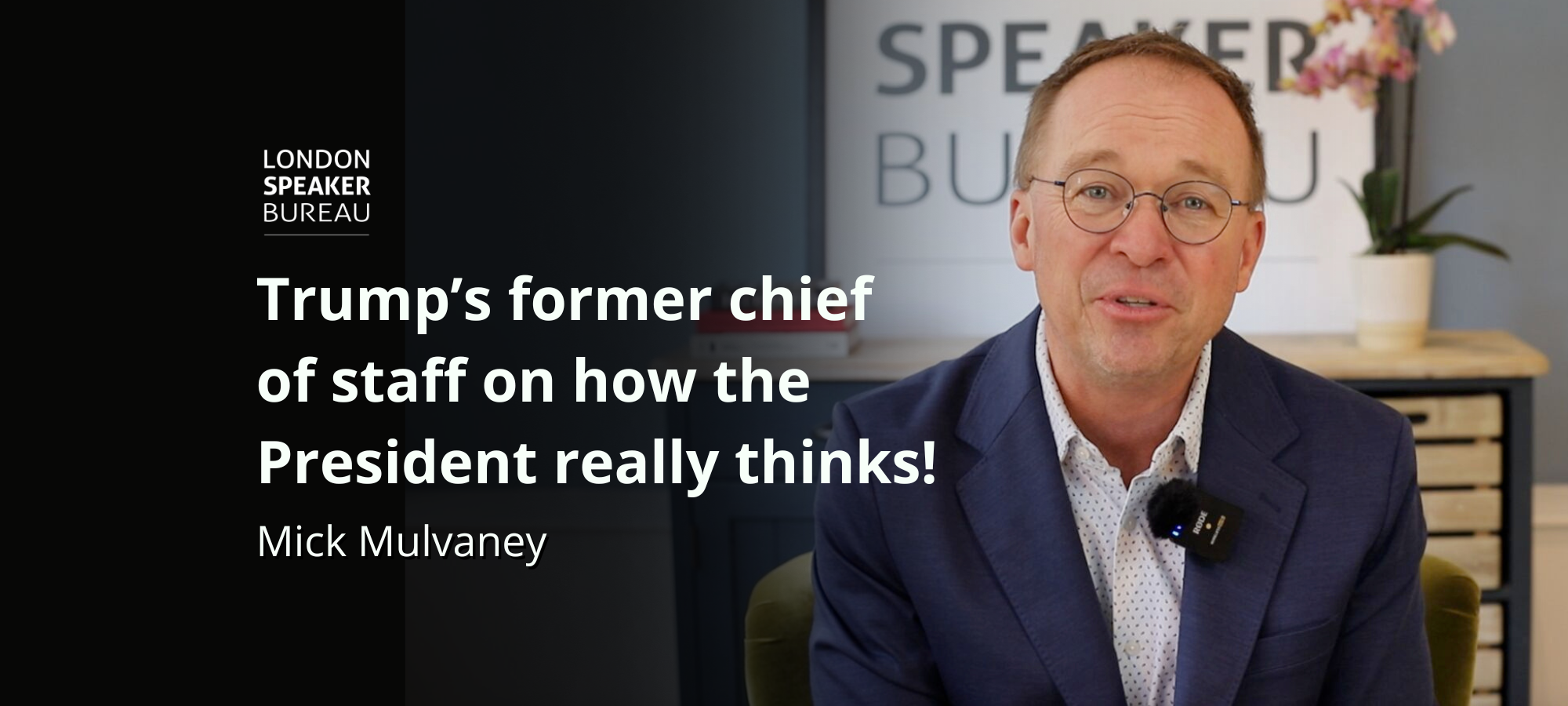Winston Ma is an investor, author, and professor in the global digital economy
 Winston Ma specialises in the global digital economy, cross-border investments, and multinational law and policy with a specific interest in the US-China relations. Ma spent 10 years as the Managing Director and Head of the North America Office for the China Investment Corporation (CIC), China’s sovereign wealth fund, where he made cross-border digital economy investments and sought out synergies between China and world markets.
Winston Ma specialises in the global digital economy, cross-border investments, and multinational law and policy with a specific interest in the US-China relations. Ma spent 10 years as the Managing Director and Head of the North America Office for the China Investment Corporation (CIC), China’s sovereign wealth fund, where he made cross-border digital economy investments and sought out synergies between China and world markets.
Your latest book titled: The Hunt for Unicorns: How Sovereign Funds Are Reshaping Investment in the Digital Economy is due for release soon. Can you share an insight into what we can expect from it?

Yes, the new book will be released in mid-October 2020. To put the book title into context, here is a quick question: Who holds the power in financial markets? For many, the answer would probably be the large investment banks, big asset managers, and hedge funds that are often in the media’s spotlight. But more and more a new group of sovereign investment funds (“SIFs”), which includes some of the world’s largest sovereign wealth funds, government pension funds, central bank reserve funds, state-owned enterprises, and other sovereign capital-enabled entities, have emerged to become the most influential capital markets players. The SIFs are estimated to have $30 trillion in assets under management and have enormous power in the financial world.
My first direct encounter with the sovereign funds was during the global financial crisis 2007-2008. At that time I was an investment banker and equity-linked derivatives specialist on the Wall Street in New York, and China Investment Corporation (CIC), the sovereign wealth fund (SWF) of China, was established in Beijing to manage a part of China’s trillion dollar foreign reserve. At that time, SWF was a new entrant to the global capital markets (Among the first few investments of CIC was a multi-billion capital injection into the stressed Wall Street behemoth Morgan Stanley). I was among the first group of overseas hires by CIC, so I moved to Beijing and started the exciting journey with the sovereign investors, in China as well in all continents of Asia, Africa, Australia/Oceania, Europe, North America, and South America.
When I moved back to New York in 2019 after 10 years with CIC, the sovereign funds were already recognized as important participants in the international monetary and financial system. In fact, it was hard to avoid the headlines their activities attract. Therefore, while I focus on the digital economy and tech investments, I have also become an adjunct professor at New York University (NYU) School of Law, teaching a course on sovereign investors, capital markets, and related regulatory challenges. As such, this new book presents the trillion dollar club of sovereign investors and their link to the boom of digital innovation and tech unicorns, which is little known to the public.
As illustrated by the book, the sovereign investment funds are the new, powerful venture capitalists. Their ample resources, long time horizon, as well as their need to diversify globally and by sector have helped to transform the investment world and, in particular, private VC markets for digital companies. Because of the large size of their investments, they are the “unicorn makers”. They have shaken off their traditional, passive investor roles and stepped into the vanguard of the digital transformation we are all living through. They have fostered the rise of the likes of Uber, Alibaba, Spotify and other transformative players in the digital economy, while providing their founders and business models the benefit of long-term capital.
Despite this increasingly important impact, sovereign investors remain mostly unknown, often maintaining a low profile in global markets. For the same reason, they are also among the most widely misunderstood, as many view investments made by sovereign investors as purely driven by political aims. The current global tensions around the AI race and tech competition – and now the corona virus pandemic – have exacerbated such misperceptions. Therefore, my new book also advocates for balanced policy responses among all stakeholders.
This book is a merely a starting point for future global dialogue, among sovereign investors, tech unicorns, VC funds, financial firms, policymakers, academics as well as the general public, for towards a more balanced understanding of SIFs in the modern political context. It is only so that can we move towards an era of greater stability, mutual prosperity, and sustained peace.
How do you think countries can use sovereign [wealth] funds to help boost their current economies?
This is already an ongoing, powerful trend across different continents. Across the globe, not every sovereign investment fund has a single objective of investing in global markets for financial returns. Some of the SIFs have domestic and strategic objectives, and some combine two or more of the functions, mixing fiscal stabilization, intergenerational savings, and economic development. Besides overseas investments, they also see strong opportunities to accelerate their domestic development agendas. For example, having contributed to the rescue of the Irish banks since the global financial crisis, the Ireland Strategic Investment Fund (ISIF) is now focusing on domestic economy development.
These funds see tech investments as a way to support economic activity and job creation at home, while simultaneously achieving commercial returns from new businesses. In this book, global sovereign funds are seen to rush to Silicon Valley, China and other innovation hubs of the world to join the unicorn hunt. At the same time, the book looks into sovereign funds nurturing the technology sector in their own back yards. For example, one of the goals of Turkey’s sovereign fund is to develop the domestic entrepreneurial economy and become the “investment gate of Turkey”. And of course, the PIF fund of Saudi Arabia and the Mubadala fund of UAE, who were the main investors behind the $100 billion Vision Fund for tech venture investments, are probably the most prominent examples.
Importantly, the rise of sovereign investors is reflected not only in the increase in the size of assets under their management but also in the proliferation of new funds established over the past decade and the anticipated establishment of new funds in countries with recent resource wealth (such as African countries), as well as in regions striving for government-driven economic transformation (e.g., the EU).
According to media reports in August 2019, EU staff have drafted a plan to launch a €100 billion ($110 billion) sovereign wealth fund, to be called “European Future Fund”. The main goal of this proposed Fund will invest into future “European tech champions”, which could potentially compete in the same league as China’s BAT (Baidu, Alibaba & Tencent) or the US GAFA (Google, Apple, Facebook & Amazon). Due to the complex EU politics, it is not clear that the fund will ever be realized; but the determination to compete with American and Chinese dominance, using a sovereign fund, in the future digital economy is clear.
Going forward, we will see more sovereign funds taking on domestic economic development mandates, especially in emerging regions such as Africa, Latin America, South Asia, and Eastern Europe. Governments are setting up national investment funds targeted at financing and catalyzing economic development — often through infrastructure projects — within their own national borders.
In the post-Covid-19 pandemic era, how are the sovereign funds helping the global economy back to sustainable growth?
As this book goes to press, the pandemic raging around the globe has brought them again to the front pages. Sometimes it is their key role in fostering the rise of the tech unicorns of AI and big data and their big bets on biotech startups searching for treatments and vaccines. More frequently, it’s coverage of their role as economic superheroes called upon to rescue the global economy.
Therefore, this book of sovereign investment funds and their global tech investments is added with a new context – world economy downturn and international tensions. Rather than being rogue actors, which was greatly feared prior to 2008-2009, these sovereign investors have become a stabilizing force in the global capital markets for stocks and bonds because of their long investment time horizons and acceptance of long-term risk. Also, the sovereign funds are supporting their domestic economies directly. For example, in April 2020, Germany created an Economic Stabilization Fund Wirtschaftsstabilisierungsfonds.
In North America, one sovereign fund with the management of pensions assets among its assigned tasks has taken on its superhero rescue mission. Dealing with the impact of the pandemic on the local economy, Caisse de Depot et Placement du Quebec (CDPQ) in Quebec, Canada has in early 2020 created a C$4 billion fund to support Quebec companies adversely affected by the coronavirus, whether or not they are in its portfolio. This program was quickly introduced to enable the recipient companies to survive the pandemic and underpin the recovery of the local economy.
With the Covid-19 pandemic forcing the world to be more digitally connected, are there any sectors or industries that will be more exposed as a result of this?
 Actually this relates to my another new book in 2020, The Digital War – How China’s Tech Power Shapes the Future of AI, Blockchain and Cyberspace), a sequel to my 2016 book China’s Mobile Economy. It will be released in December 2020, slightly later than the book The Hunt for Unicorns, because the ongoing, escalating China-US tech war means the script needs constant updates (LOL).
Actually this relates to my another new book in 2020, The Digital War – How China’s Tech Power Shapes the Future of AI, Blockchain and Cyberspace), a sequel to my 2016 book China’s Mobile Economy. It will be released in December 2020, slightly later than the book The Hunt for Unicorns, because the ongoing, escalating China-US tech war means the script needs constant updates (LOL).
Since the coronavirus became a pandemic in March 2020, and people around the world dived into remote working, video-conferencing services have become vital components of this new way of life. Zoom, a little-known online platform, has emerged as the go-to service for not only virtual meetings and classroom lessons but also church services, book clubs, costume parties, romantic dates, and even wedding ceremonies. Between December 2019 and April 2000, Zoom’s daily meeting participants jumped 30-fold to 300 million in mere five months.
Another sector of enormous growth is short video. As the COVID-19 pandemic has forced the world’s teenagers out of school and into their rooms, they have turned to short videos platforms for entertainments. Throughout the world, the young generation’s native language in the cyberspace is video. They watch videos – which they are also making, in great abundance. For one, video is easier to post to one’s peers than writing (language) is. For two, with few voiceovers, this content easily travels globally. Not surprisingly, stoked by the pandemic, the short video app TikTok was second in downloads to Zoom video-conference app in the first half of 2020, according to market-research firm Sensor Tower.
Because of the rise of video conferencing, entertainment videos, and numerous activities going online, the global telecoms infrastructure has been overloaded with a surge in traffic due to the coronavirus pandemic, and 5G network, with its larger bandwidth and low latency, is seen as a solution. Therefore, the digital infrastructure sector will also see rapid developments.
How will the global digital sharing economy be affected as a result of the pandemic?
The pandemic has provided a new catalyst for the global digital sharing economy if we look at China for an example. Since early 2020 China has been on the frontlines both of coronavirus-driven (COVID-19) economic downturn, and of the societal changes the pandemic has precipitated. The coronavirus crisis’ impact on Chinese consumers has been profound, especially for the affluent younger generation who have never experienced a domestic economic downturn.
For example, the young Chinese’ desire to display their lifestyle on social media and the pressure of keeping up with fast-changing trends fuels the need for a fast turnover of their outfits. These conspicuous youth enjoy the status conferred by luxury brands and they do not want to be seen in the same outfit twice on social media, but they need to find access to different outfits within their budget. In 2019 the market saw China’s sharing economy extending its reach into fashion and luxury in a big way, and that trend would continue as China’s economy begins to slow down.
Meanwhile, the behaviour changes from the pandemic have also led to sharing economy developments. Three years ago, China’s bike-sharing sector was booming, and start-ups crammed city streets with colourful two wheelers. The bubble burst in 2019, resulting in a wave of bankruptcies and huge bike graveyards. Now the COVID-19 pandemic is sparking a new enthusiasm for cycling in China, as people avoid buses and subways for fear of infection. For more details, please read my book excerpt at the World Economic Forum website: Here are 4 major bike-sharing trends from China after lockdown.
With China and the US creating the majority of wealth in the digital economy, what are the global risks of these two powerhouses going head to head?
True, a US-China tech decoupling is real and accelerating. Hence the digital economy is in a vital conflict and crisis: the global tech world, and together with at least part of the world economy, is now fractured into two – and potentially more, considering Europe, Japan and other regions – spheres of influence, whereas tech entrepreneurs are driving the prospect of technological singularity, hyperconnected society, and internet of everything.
For example, also joining in the 5G sparring match between China and the US, Japan in 2020 is reportedly stepping into the ring by appropriating 220 billion yen (approximately $ 2 billion) for corporate research and development of “6G” technology (the next generation telecommunication tech after 5G – not a typo here). And as mentioned earlier, the EU is contemplating a sovereign fund for its own tech champions. In short, the China-US tech war is driving more countries to take a serious look at “tech independence”.
Thus, the fundamental risk is a potentially “fragmented” cyberspace. The biggest loser is the next billion users from emerging markets, as the global tech tensions will slow down internet connectivity to close off half of the world population who are not even linked to the internet yet. And by the time they are online, the internet is no longer the same anymore. The cyberspace could become more of a patchwork of fiefs as varied as the visa policies that fragment world travel.
In short, there is no winner in balkanization of the cyberspace. My new book is timely titled, The Digital War (as a sequel to my 2016 book China’s Mobile Economy, the book title was China’s Digital Economy originally), but my great hope is that we can use technology to build a greater understanding between East and West. What’s hopeful is that the economic relationship and innovation interdependence among countries may create a new equilibrium and a shared digital future. (See link to my 2018 Feature Video by the CFA Institute -Build a Digital Bridge.)
Interested in booking Winston Ma as a keynote speaker for your next event?





